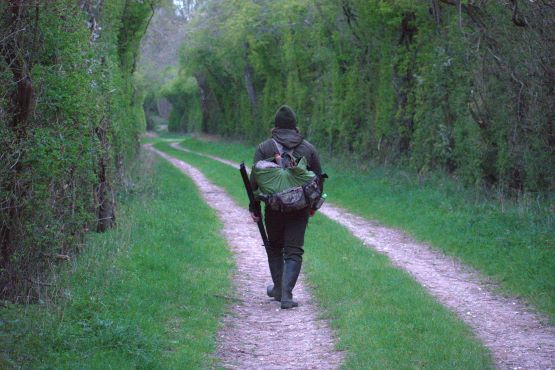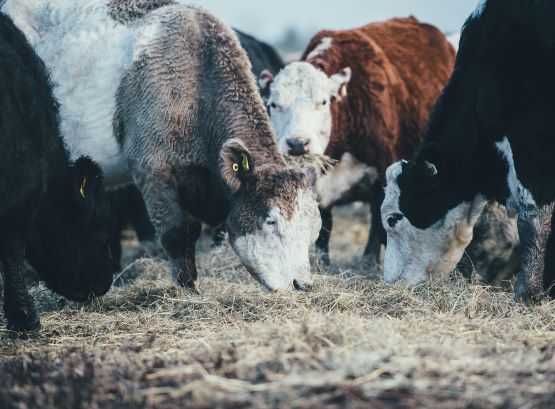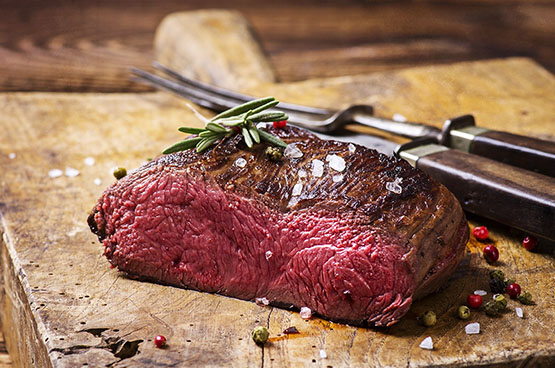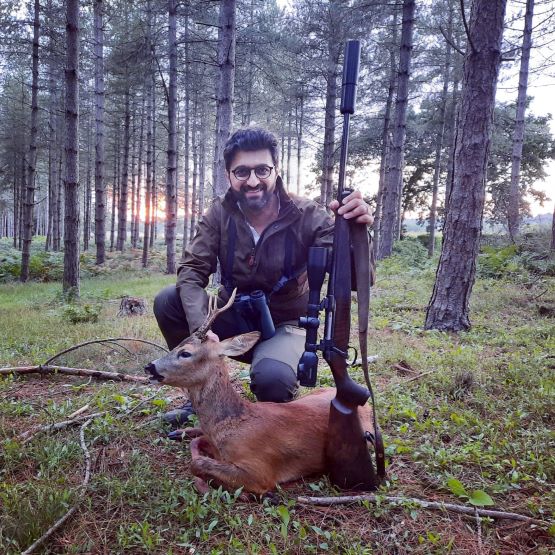As an avid deer stalker and consumer of venison, Mo Shiran discusses the carbon footprint of farmed meat vs wild venison.

Deer stalking regrettably remains a controversial topic in some areas of modern British society. Moreover, in a twenty-first century context, the issue of meat-eating or consumption of any animal produce is high on the agenda for tackling climate change. The rise of those opting for a vegetarian, vegan or ‘flexitarian’ diet is on the rise, and supermarkets haven’t been slow to embrace this new market with a wide selection of plant-based products now widely available. There is, however, a startling hypocrisy to the explosion of mass-produced, over-priced, plastic-packaged, ultra-processed supermarket goods which profess to be better for us and for the planet.

It is true that our consumer habits have a direct impact on the planet, but perhaps not always in the way we expect. According to a 2019 report from Intergovernmental Panel on Climate Change of the United Nation (IPCC), the process of producing, processing, and transporting our food to our tables is responsible for up to 37% of total global greenhouse gas emissions.1 It is clear that food supply chain is not the only barrier in tackling climate change, and such conclusions are overly simplistic at best, but evidently it is a major contributor.
There are a huge array of sponsored and/or uninformed articles, alongside producers and distributors claiming to have achieved zero (or reduced) carbon footprint with ever-inventive means of offsetting the environmental impact rather than addressing the issue in hand. Despite government’s commitment to reduce greenhouse gas, there is an absence of comprehensive legislation and a responsible body to provide a consistent means to measure the greenhouse gas emission of our food, and lack of unbiased and verified dataset to guide and benefit the consumers.
However, there are some limited sources worth mentioning. In a study compiled by the University of Oxford and shared by the BBC, food production was found responsible for a quarter of all greenhouse gas emissions, of which meat and other animal products are responsible for 58% of food related greenhouse gas emission.2,3 Of all the products analysed in the study, beef and lamb were found to have by far the most damaging effect on the environment, with 50% of the farm animal emission coming from beef and lamb. For example, consuming on average 75g of beef (the average size of a beef burger or a portion of lasagne, and almost equal to recommended daily consumption of 70g by the NHS), four times a week, will contribute to 1,611kg of greenhouse gas annually; over a 1.5 tonne of greenhouse gas for consuming only 15.6kg of beef in one year (103kg greenhouse gas/kg beef). That is equivalent to driving a petrol car seven time from the northern tip of Scotland to the southern coast of England or heating the average British home for 255 days.
“Consuming 1kg of farmed beef emits 103kg of greenhouse gas”

Although I found this report insightful and accurate in quantifying the impact of our food supply chain on the environment, I was disappointed in the simplistic conclusion to avoid meat and dairy products and replacing them with vegetarian options. Red meat is a great source of protein, iron, zinc, vitamin B12 and other nutrients.
So, what are the alternatives? Well for you and I it may be evident: introducing highly lean and nutritious culled wild venison into the food chain, where the only source of carbon emission is the driving to the ground and running the freezer? It is slightly more complicated. The carbon footprint emissions are calculated also includes estimate impact from wate management, utilities plus the methane emission by deer. The Scottish Venison Association reported 88% of the total greenhouse gas pollution associated with wild venison were linked to the methane emissions. Overall, 1kg of culled venison emits only 22.3kg of the greenhouse gas. This is a significant reduction compared to 103kg emission from a kilo of beef! For an average consumer in Britain its equivalent of 348kg of greenhouse gas emission per year.4
“Consuming 1kg of culled wild venison emits only 22.3kg of the greenhouse gas, 78% less compared to farmed beef”

Of course, there are wider environmental benefits to introducing culled venison as a replacement for farmed beef. With the deer population at its highest in a thousand years, culling deer is considered a necessity to conserve the health of all the individual deer species and the overall biodiversity of the British countryside and woodlands. Grazing by large populations of deer reduces plant and animal diversity in the forest, which can in turn affect soils and release carbon. Deer can also damage or kill young trees by damaging bark and lower-hanging branches, preventing forests from regenerating. I am certain if the positive impacts of culling deer and effective deer management on the woodland were to be considered and taken seriously, the carbon footprint of culled venison would be significantly lower.
Let’s make some estimations: on average a tree can absorb 24kg of carbon dioxide per year.5 In the most pessimistic scenario - assuming a deer can damage/prevent the growth a young tree per week - annually it is preventing the absorption of 1,248kg of carbon dioxide. So, all things considered, consuming culled venison as a replacement for beef not only is carbon neutral, but it also provides 900kg of carbon credit annually.
In absence of a responsible body, most consumers are blind to the environmental impact of their food shopping choices and opportunities for alternative sustainable and healthier options. This is therefore my response to anyone questioning my ethics and the environmental choices of harvesting wild deer. Meanwhile I continue to encourage more people to switch to venison and highlight the positive impacts on our health and planet Earth.
Mo Shiran, Capreolus Club member.
If you are interested in deer stalking and would like to learn how to become a trained hunter and harvest your own deer from the countryside, a great place to get some training is by taking the ‘Proficient Deer Stalking Certificate Level 1 (PDS1) a LANTRA approved deer stalking course that provides the candidate with the skills required to humanely stalk and harvest wild deer. To find out more, simply follow this link: deer-stalking-course
If you’d like to go deer stalking, County Deer Stalking is a leading provider of deer stalking outings around the South of England. You can contact us on: 0230 981 0159 or by emailing
Article References
[1] https://www.carbonbrief.org/food-systems-responsible-for-one-third-of-human-caused-emissions/#:
[2] https://www.bbc.co.uk/news/science-environment-46459714
[3] https://ora.ox.ac.uk/objects/uuid:
[4] https://www.scottish-venison.info/wp-content/uploads/2024/03/SVA-Carbon-Report-Final-v2.pdf




















